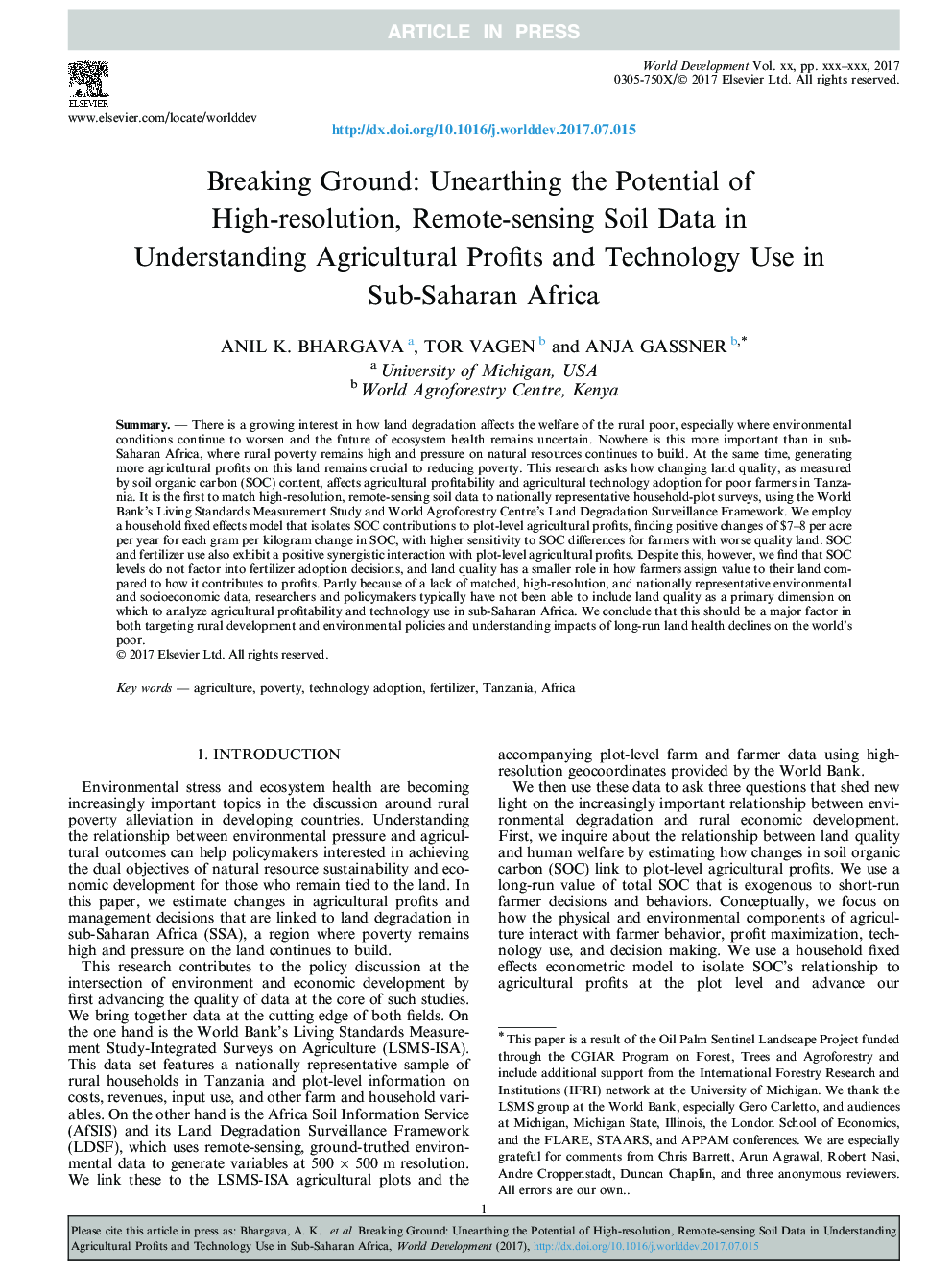| کد مقاله | کد نشریه | سال انتشار | مقاله انگلیسی | نسخه تمام متن |
|---|---|---|---|---|
| 7391981 | 1481113 | 2018 | 16 صفحه PDF | دانلود رایگان |
عنوان انگلیسی مقاله ISI
Breaking Ground: Unearthing the Potential of High-resolution, Remote-sensing Soil Data in Understanding Agricultural Profits and Technology Use in Sub-Saharan Africa
ترجمه فارسی عنوان
شکستن زمین: پتانسیل داده های خاکستری با وضوح بالا، سنجش از راه دور را در درک سود و تکنولوژی کشاورزی در مناطق جنوب صحرای آفریقا
دانلود مقاله + سفارش ترجمه
دانلود مقاله ISI انگلیسی
رایگان برای ایرانیان
کلمات کلیدی
کشاورزی، فقر، تصویب فناوری، کود، تانزانیا، آفریقا،
موضوعات مرتبط
علوم انسانی و اجتماعی
اقتصاد، اقتصادسنجی و امور مالی
اقتصاد و اقتصادسنجی
چکیده انگلیسی
There is a growing interest in how land degradation affects the welfare of the rural poor, especially where environmental conditions continue to worsen and the future of ecosystem health remains uncertain. Nowhere is this more important than in sub-Saharan Africa, where rural poverty remains high and pressure on natural resources continues to build. At the same time, generating more agricultural profits on this land remains crucial to reducing poverty. This research asks how changing land quality, as measured by soil organic carbon (SOC) content, affects agricultural profitability and agricultural technology adoption for poor farmers in Tanzania. It is the first to match high-resolution, remote-sensing soil data to nationally representative household-plot surveys, using the World Bank's Living Standards Measurement Study and World Agroforestry Centre's Land Degradation Surveillance Framework. We employ a household fixed effects model that isolates SOC contributions to plot-level agricultural profits, finding positive changes of $7-8 per acre per year for each gram per kilogram change in SOC, with higher sensitivity to SOC differences for farmers with worse quality land. SOC and fertilizer use also exhibit a positive synergistic interaction with plot-level agricultural profits. Despite this, however, we find that SOC levels do not factor into fertilizer adoption decisions, and land quality has a smaller role in how farmers assign value to their land compared to how it contributes to profits. Partly because of a lack of matched, high-resolution, and nationally representative environmental and socioeconomic data, researchers and policymakers typically have not been able to include land quality as a primary dimension on which to analyze agricultural profitability and technology use in sub-Saharan Africa. We conclude that this should be a major factor in both targeting rural development and environmental policies and understanding impacts of long-run land health declines on the world's poor.
ناشر
Database: Elsevier - ScienceDirect (ساینس دایرکت)
Journal: World Development - Volume 105, May 2018, Pages 352-366
Journal: World Development - Volume 105, May 2018, Pages 352-366
نویسندگان
Anil K. Bhargava, Tor Vagen, Anja Gassner,
